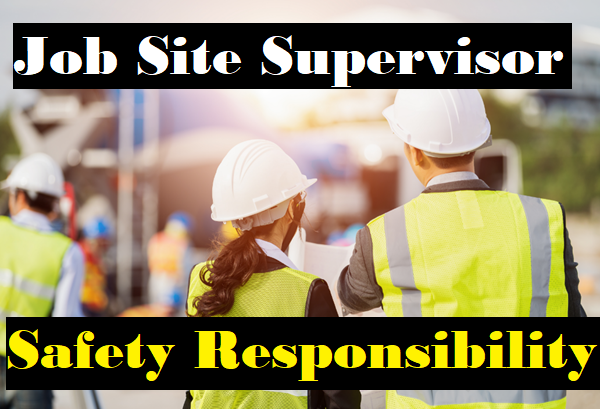Job Site Supervisor – Safety Responsibility
How Technology and Innovation are Transforming HSE
The job site supervisor shall
visibly demonstrate the priority of safety in all activities he supervises,
including setting a good personal example to the workers under working him on
safety practices.
• The job supervisor to be
qualified, provide direct and effective on-site supervision and be continuously
present on-site.
• Empowered to stop the work that deem
to be unsafe and to take immediate corrective actions as needed.
• Assess the workplace safety and job activities to determine hazards that are present or are likely to be present, in consultation with the safety manager or field safety officer as needed
• Appraise hazardous or critical
operations and implement all required precautions to ensure the safety of all
affected personnel (note: hazardous operations may include, but are not limited
to: welding, cutting, radiography, abrasive blasting, asbestos removal,
electrical work, solvent cleaning, crane operations, etc.).
• Understand and implement the
safest method of performing each job activity in their area of responsibility.
• Provide instructions to his
working team members on right work methods, sequence of operations, potential
hazards at each stage and precautions to follow for the safe execution and for
the safety of the workers.
• Inform workers of safe work methods and safety requirements prior to beginning a each work activity (i.e., conduct prejob "toolbox" safety meetings).
HSE Interview Success How to Showcase
• Engage only trained employees who
are properly qualified for the work to be performed.
• Ensure that equipment operators
operate only the specific equipment for which they have been trained and/or
certified/authorized.
• Plan and maintain good
housekeeping in the work area.
• Coordinate with subcontractors
and other contractors on-site to avoid confusion in areas with joint or
overlapping responsibility or joint occupancy to avoid collateral risk associated
with simultaneous activities.
• Provide the required PPE to all
workers and ensure proper use by all.
• Ensure equipment and tools (both
power and hand tools) are in good operating condition and properly used.
• Train workers on emergency response procedures/plans.
How Technology and Innovation are Transforming HSE
• Provide immediate assistance as
requested by the safety manager/supervisor,
emergency response organizations, etc., during emergencies.
• Work site inspections- Conduct
daily work site inspections to identify and immediately correct unsafe acts,
conditions and/or equipment.
• Document and coordinate safety
inspection activities and findings with the safety manager/supervisor.
• Reporting of incidents - Immediately
report all incidents, unsafe conditions and defects in equipment to the safety
management.
• Participate in incident
investigations, safety meetings, drills and conduct/facilitate safety
training sessions.
Safeguarding Your Construction Site: A Practical Guide

No comments:
Post a Comment